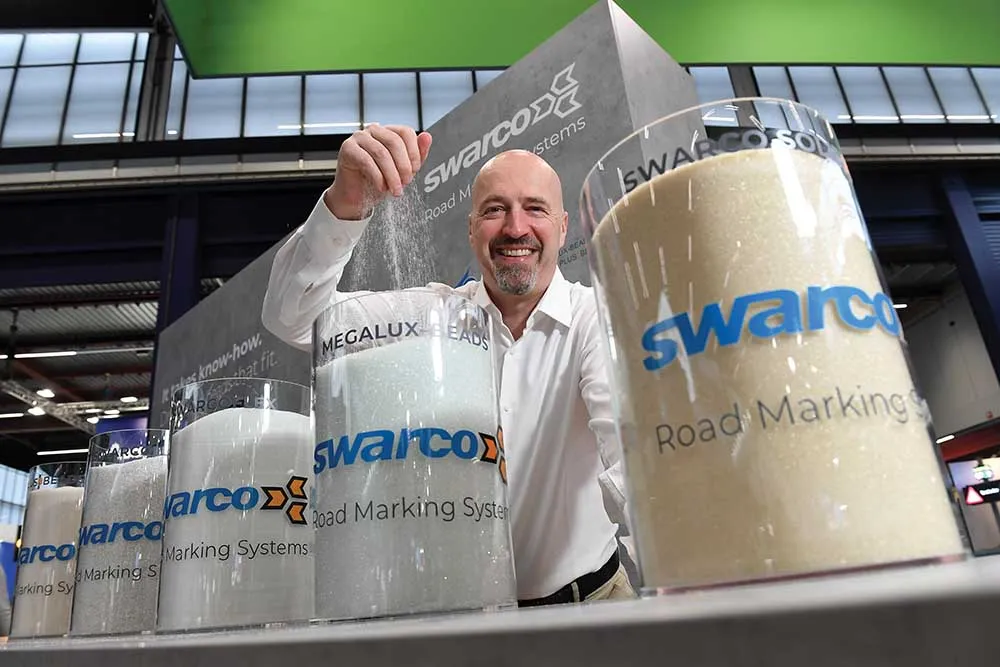
This is a road sign that incorporates a foil (similar to mobile phone screen technology) which illuminates at night to light-up road signs rather than requiring separate incandescent or LED lighting. According to the company the foil provides sufficient light, even in inclement weather conditions such as rain and fog, that the sign remains totally visible.
Furthermore, through the use of a transparent layer of photovoltaic cells, the sign’s surface doubles as a solar panel, enabling the system to be completely self-powering. Not only does this remove the need for external cabling, it also means the self-illuminating signs can be retrofitted onto existing posts.
The sign uses between 12 and 20 Watts with a light colour of between 5,000K and 6,500K and comes with imprinted energy storage capacity. Sensors in the foil make the product ‘smart’ as they automatically trigger the sign’s illumination when the ambient light falls below a pre-set level and the product is said to have a service life of at least 10 years.
Also on the stand is a demonstration of the company’s latest Intelligent Public Space - a network for smart products and solutions in public spaces. This can include smart rubbish containers, autonomously illuminated objects and assets (such as traffic signs) that report when they become damaged or are removed.









